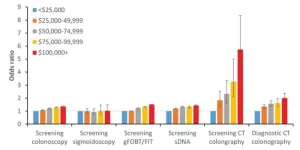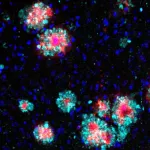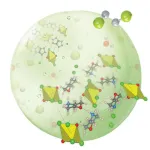(Press-News.org) Humanity has a long track record of making big changes with little forethought. From fossil fuels to AI, plastics to pesticides, we love innovating away our problems, only to find we’ve created different ones. So it can be refreshing to hear about cases where we’ve taken a step back to deliberate before committing to a drastic new idea, like carbon dioxide removal.
With carbon emissions continuing to climb, many scientists, environmentalists and policy-makers have advocated taking action to directly remove carbon from the atmosphere. They argue that these geoengineering approaches are necessary to avoid catastrophic changes to our land, air and sea.
Researchers at UC Santa Barbara are evaluating the effects of one such proposal that involves increasing the ocean’s alkalinity to boost carbon sequestration. The aim is to speed up the geologic processes that remove carbon from the atmosphere, which are very powerful, but very slow. The team investigated how this would affect two of the ocean’s most numerous and important plankton groups at the bottom of the food chain. Their findings, published in Science Advances, suggest that the plankton would fare well under the treatment, a positive result that encourages more research into this promising proposal.
“As we add CO2 into the atmosphere, we’re acidifying the ocean,” said lead author James Gately, a doctoral student at UC Santa Barbara. “Adding alkalinity is essentially like adding an antacid into the ocean.” Alkaline, or basic, compounds alter the chemistry of seawater, converting CO2 into other carbon compounds, like carbonate and bicarbonate ions. This enables the ocean to absorb more carbon dioxide while reducing the water’s acidity.
In fact, this mechanism forms the basis of the geologic carbon cycle, which recycles carbon between the earth, atmosphere and ocean over long periods of time. “This process typically takes tens to hundreds of thousands of years to occur,” Gately said. “Our aim is to speed this process up.”
The driving question for Gately and his colleagues is how will marine life respond to ocean alkalinity enhancement on large scales? To get at the answer, they looked at how this treatment affected two key groups of plankton: diatoms and coccolithophores.
Both groups are important primary producers, turning sunlight into food and serving as the basis of the ocean’s food chain. “They play a major role in the biological carbon pump, which is essentially the way the oceans lock carbon dioxide away from the atmosphere over millions of years,” said Professor Débora Iglesias-Rodriguez, Gately’s adviser in the Department of Ecology, Evolution, and Marine Biology. These plankton also construct exoskeletons, meaning they move massive amounts of calcium, silica and carbonate around the biosphere.
Annual phytoplankton blooms (e.g., coccolithophores and diatoms) feed small fish and so forth all the way up the food chain. After the blooms, the dead cells fall to the seafloor, creating a carbonate or silica-rich sediment. Over time, this sediment sequesters carbon from the atmosphere that the organisms had taken in through photosynthesis. Eventually, the seafloor sediment can become chert and limestone. If ocean alkalinity enhancement impacts either of these plankton, the results could be dire.
The team added nutrients and alkalinity to water they collected from the Santa Barbara Channel. Typically, minerals like olivine and various carbonates provide the alkalinity over geologic time, but Gately and his co-authors mimicked this process with other compounds that dissolve and react more quickly. Then they filtered the water to sterilize it before bubbling through air with 420 parts per million carbon dioxide, roughly equivalent to modern atmospheric CO2 concentrations. After a few days, the team added diatoms and coccolithophores they had cultured in the lab.
The alkalinity of the modern ocean is around 2,300 to 2,400 micro-moles per kilogram of water. The scientists ran one trial at 3,000 µmol/kg, simulating long-term alkalinity addition and another at 5,000 µmol/kg to simulate potential hotspots, like a treatment site.
The authors measured a suite of changes to the planktons’ physiology and biochemistry, as well as the chemistry of the seawater. They were particularly curious whether the coccolithophores would increase their calcification, as the treatment would raise the abundance of calcium ions in the water. Ironically, creating calcium carbonate actually produces CO2, even though the compound has carbon and oxygen in it. Over long timescales, the sequestration effects win out, making coccolithophores one of the largest carbon sinks on Earth.
All told, the plankton had a neutral response to the alkalinity treatments, and calcification didn’t change significantly. The cells’ photosynthetic efficiency decreased slightly, but was still well within healthy levels for both treatments. The authors suspect the decrease may be due to reduced availability of micronutrients, like iron.
In fact, the team observed dissolved ions turning into solid compounds, or precipitating, at higher alkalinities. This process can remove nutrients and alkalinity from solution, which could both affect sea life and decrease the efficacy of ocean alkalinity enhancement. The team is already investigating the process in new experiments.
“All told, when we increased alkalinity in the water, the physiology of these organisms did not change,” said Iglesias-Rodriguez. While the results are encouraging, the authors caution against extrapolating out to the ecosystem scale, because responses can vary by species. “Phytoplankton is a good start, but we need to test this in other organisms and ecosystems as well.”
The group has already begun conducting alkalinity enhancement experiments on entire plankton communities under natural nutrient concentrations. They’ll measure the response of individual species as well as the community as a whole. Eventually the team plans to take the research out of the lab and into the field. “It’s very exciting, but we need to operate with caution,” Iglesias-Rodriguez said.
Like many geoengineering proposals, ocean alkalinity enhancement is a controversial topic. “We’re not saying this is a good idea,” Gately said, “we’re trying to determine whether it is or not.”
The problem is that it’s too late to simply rely on reducing our emissions if we want to keep warming under 2 degrees Celsius. Expanding carbon removal to the gigaton scale will require several approaches; ocean alkalinity enhancement is merely one of them. “None of these technologies is a silver bullet for climate change,” Gately said, but the ocean sequesters over an order of magnitude more carbon than the land and atmosphere combined, making ocean-focused approaches attractive.
That said, geoengineering alone can’t solve the problem unless society reduces greenhouse gas emissions. “If we’re in a boat with a hole, we can use a bucket to try to scoop out the water,” Gately added. “But if we don’t plug the hole, we’re going to sink.”
END
Important groups of phytoplankton tolerate some strategies to remove CO2 from the ocean
Promising results out of UC Santa Barbara encourage more research into this promising proposal
2023-07-20
ELSE PRESS RELEASES FROM THIS DATE:
Private equity takeovers of healthcare services linked to patient harm
2023-07-20
Private equity ownership of healthcare services such as nursing homes and hospitals is associated with harmful impacts on costs and quality of care, suggests a review of the latest evidence published by The BMJ today.
No consistently beneficial impacts of private equity ownership were identified, and the researchers say these results confirm the need for more research on private equity ownership in healthcare and possibly increased regulation.
Private equity firms use capital from wealthy individuals and large institutional investors to buy companies, and, after a relatively brief period of ownership, ...
Disrupted access to healthcare during pandemic linked to avoidable hospital admissions
2023-07-20
People who experienced disrupted access to healthcare (including appointments and procedures) during the covid-19 pandemic were more likely to have potentially preventable hospital admissions, finds a study published by The BMJ today.
This is the first study to examine the impact of disruption on health outcomes using individual level longitudinal data, and the researchers say reducing the backlog from covid-19 disruption is vital to tackle the short and long term implications of the pandemic.
The ...
Exposure to antiseizure medications does not harm neurological development in young children
2023-07-20
PITTSBURGH, July 19, 2023 — Most mothers who took prescription antiseizure medications during pregnancy can breathe a sigh of relief: A new study published today in Lancet Neurology found that young children who were exposed to commonly-prescribed medications in utero do not have worse neurodevelopmental outcomes than children of healthy women.
Commonly used antiseizure medications such as lamotrigine and levetiracetam are generally considered effective and safe, especially compared to many first-generation epilepsy treatments that carried profound risks to the unborn child. ...
AJR on sociodemographic factors and screening CTC among Medicare beneficiaries
2023-07-20
Leesburg, VA, July 19, 2023—According to an accepted manuscript published in the American Journal of Roentgenology (AJR), lacking Medicare coverage could contribute to greater income-based differences in use of screening CT colonography (CTC) than of other recommended screening strategies or of diagnostic CTC.
Noting that Medicare’s non-coverage for screening CTC may account for lower adherence with screening guidelines among lower-income beneficiaries, “Medicare coverage of CTC could reduce income-based disparities for individuals avoiding optical colonoscopy due to invasiveness, need for anesthesia, or complication ...
Study sheds light on cellular interactions that lead to liver transplant survival
2023-07-20
A new study identifies how certain proteins in the immune system interact leading to organ rejection. The study, which involved experiments on mice and human patients, uncovered an important communication pathway between two molecules called CEACAM1 (CC1) and TIM-3, finding that the pathway plays a crucial role in controlling the body's immune response during liver transplantation.
When an organ is transplanted from a donor to a recipient, the recipient's immune system recognizes the transplanted tissue as foreign, activating an immune response that can lead to rejection. T cells play a significant role ...
A potential new biomarker for Alzheimer’s
2023-07-20
Alzheimer’s is considered a disease of old age, with most people being diagnosed after 65. But the condition actually begins developing out of sight many years before any symptoms emerge. Tiny proteins, known as amyloid-beta peptides, clump together in the brain to form plaques. These plaques lead to inflammation and eventually cause neuronal cell death.
Interplay of proteins in the brain reveals disease mechanism
Exactly what triggers these pathological changes is still unclear. “We’re lacking good diagnostic markers that would allow us to reliably detect the disease at an early stage or make predictions about its course,” says Professor ...
A non-covalent bonding experience
2023-07-19
UPTON, NY—Putting a suite of new materials synthesis and characterization methods to the test, a team of scientists from the University of Iowa and the U.S. Department of Energy's (DOE) Brookhaven National Laboratory has developed 14 organic-inorganic hybrid materials, seven of which are entirely new. These uranium-based materials, as well as the detailed report of their bonding mechanisms, will help advance clean energy solutions, including safe nuclear energy. The work, currently published online, was recognized as both a Very Important Paper and a Hot Topic: Crystal Engineering in ...
Research analyzes kidney functions and predictors of disease
2023-07-19
Research is shedding light on kidneys, their critical functions, and predictors of disease.
The research co-led by Matthias Kretzler, M.D. describes the creation of a cellular atlas of the kidney describing nearly 100 cell types and states. It represents the most comprehensive study of cellular states, neighborhoods, and outcome-associated signatures in the kidney.
Researchers from more than twenty institutions collaborated on this project.
Kidneys monitor and maintain the internal balance in the body, filter out ...
SARS-CoV-2 infects liver, stimulating glucose production and contributing to severe form of COVID-19
2023-07-19
Research conducted at the University of São Paulo (USP) in Brazil shows that SARS-CoV-2, the virus that causes COVID-19, can infect liver cells (hepatocytes), stimulating glucose production and leading to a condition similar to diabetes (hyperglycemia) in hospitalized patients, even if their blood sugar level was normal before they were admitted to hospital.
An article on the study is published in Proceedings of the National Academy of Sciences (PNAS). The findings describe part of the mechanism used by the virus to infect liver cells and impair glucose metabolism, and point ...
Research could pave way to greener, more sustainable products made with renewable carbon
2023-07-19
Carbon-based materials have several qualities that make them attractive as catalysts for speeding up chemical reactions. They are low-cost, lightweight and their high surface area provides a good scaffold on which to anchor catalysts, keeping them stable and dispersed far apart, while providing molecules a lot of surface area to work. This makes carbons useful for energy storage and sensors. Over the last 10 years, carbons have been used in electrochemistry to catalyze reactions to make chemicals and fuel cells.
However, ...
LAST 30 PRESS RELEASES:
Quantum ‘alchemy’ made feasible with excitons
‘Revoice’ device gives stroke patients their voice back
USF-led study: AI helps reveal global surge in floating algae
New method predicts asthma attacks up to five years in advance
Researchers publish first ever structural engineering manual for bamboo
National poll: Less than half of parents say swearing is never OK for kids
Decades of suffering: Long-term mental health outcomes of Kurdish chemical gas attacks
Interactional dynamics of self-assessment and advice in peer reflection on microteaching
When aging affects the young: Revealing the weight of caregiving on teenagers
Can Canada’s health systems handle increased demand during FIFA World Cup?
Autistic and non-autistic faces may “speak a different language” when expressing emotion
No clear evidence that cannabis-based medicines relieve chronic nerve pain
Pioneering second-order nonlinear vibrational nanoscopy for interfacial molecular systems beyond the diffraction limit
Bottleneck in hydrogen distribution jeopardises billions in clean energy
Lung cancer death rates among women in Europe are finally levelling off
Scientists trace microplastics in fertilizer from fields to the beach
The Lancet Obstetrics, Gynecology, & Women’s Health: Taking paracetamol during pregnancy does not increase risk of autism, ADHD or intellectual disabilities, confirms new gold-standard evidence review
Taking paracetamol during pregnancy does not increase risk of autism, ADHD or intellectual disabilities
Harm reduction vending machines in New York State expand access to overdose treatment and drug test strips, UB studies confirm
University of Phoenix releases white paper on Credit for Prior Learning as a catalyst for internal mobility and retention
Canada losing track of salmon health as climate and industrial threats mount
Molecular sieve-confined Pt-FeOx catalysts achieve highly efficient reversible hydrogen cycle of methylcyclohexane-toluene
Investment in farm productivity tools key to reducing greenhouse gas
New review highlights electrochemical pathways to recover uranium from wastewater and seawater
Hidden pollutants in shale gas development raise environmental concerns, new review finds
Discarded cigarette butts transformed into high performance energy storage materials
Researchers highlight role of alternative RNA splicing in schizophrenia
NTU Singapore scientists find new way to disarm antibiotic-resistant bacteria and restore healing in chronic wounds
Research suggests nationwide racial bias in media reporting on gun violence
Revealing the cell’s nanocourier at work
[Press-News.org] Important groups of phytoplankton tolerate some strategies to remove CO2 from the oceanPromising results out of UC Santa Barbara encourage more research into this promising proposal



